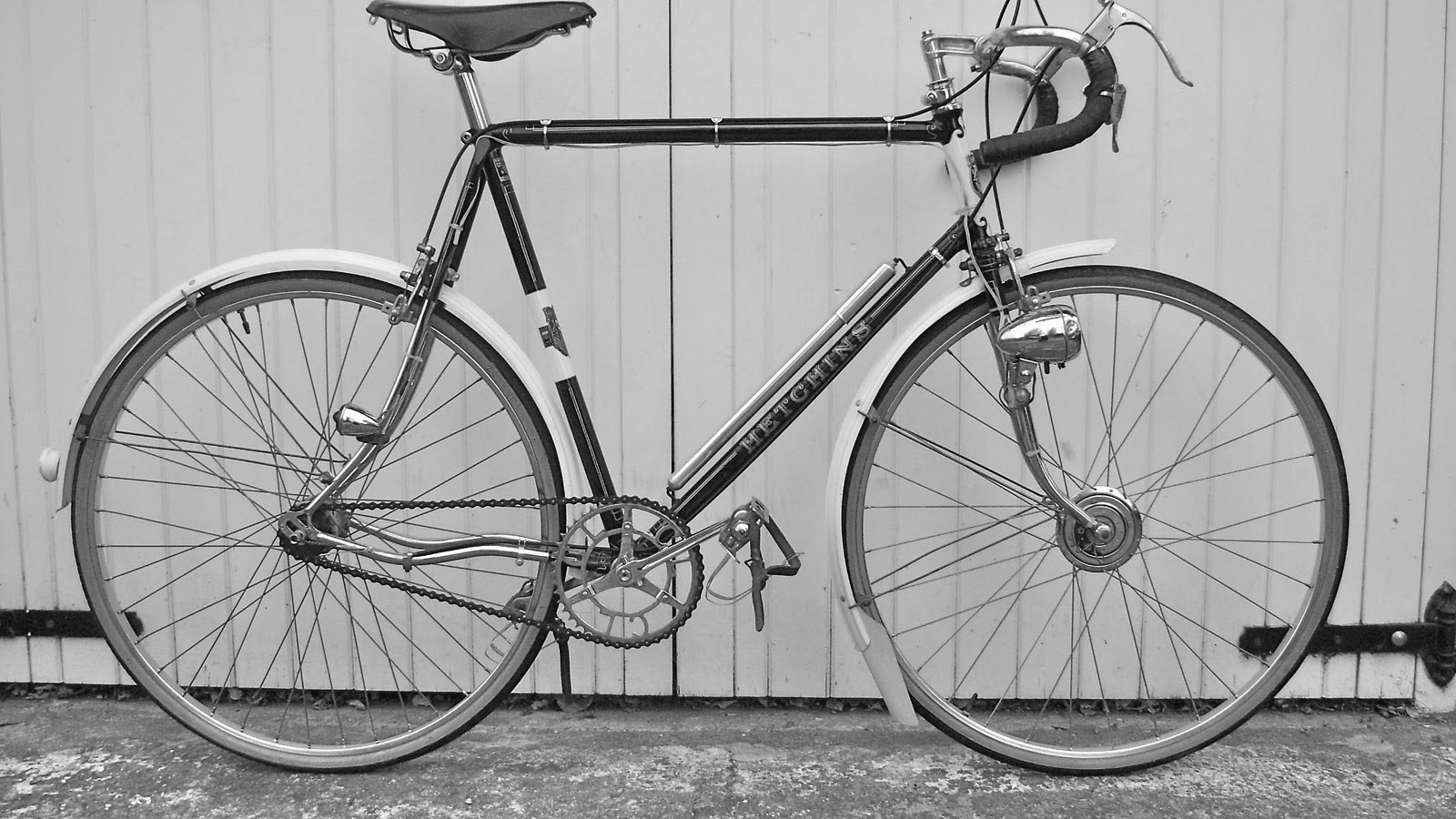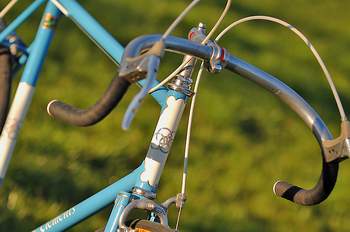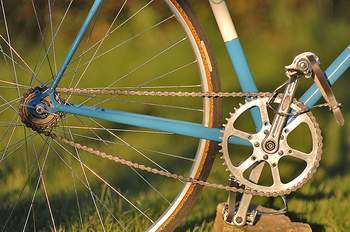Ernie Clements - 1948
Posted: Thursday 13th August 2020
How it was acquired:
I bought this Ernie Clements frame from a fellow enthusiast at a cycle jumble. It had been painted white and covered in modern stickers, then further defiled by a motley selection of cheap 1980s componentry. All the period parts had been removed. Nobody showed the slightest interest in buying it. When I ventured over to take a look, the owner sensed that I may be a potential buyer and suggested a price so low that it was impossible to resist. Clearly he didn’t want to take it back home again. I was informed that it was an Ernie Clements frameset, that it was built in 1948 and that it had only one previous owner, who then gave it to his son. It bore the name Alan Gee on the top tube; whether this was father or son I know not. So without haggling (unusual for me), I bought the Clements. It was worth it just for the headset.
Features that make it special:
When I eventually got it home and stripped all the rubbish away, it was clear that it was a particularly finely finished frameset and that it was also unusually light for a steel frame – lighter than my fillet-brazed CB. It also had very close clearances for the rear tyre at the chainstays, indicating that it was probably built for sprint wheels. The simple yet attractive lugs were finely tapered and the seatstays pencil-thin at their lower ends, while the area around the seatbolt had been cut or filed away to save weight. An altogether very nice piece of workmanship with that unmistakeable ‘ring’ of double-butted 531 about it.
But what really makes this special is that if it were really built in 1948 – and the style of the lugs suggests that it was of that era – then this is the same year in which Ernie Clements won a team silver medal in the Olympic games in London. Clements was one of our best riders at the very dawn of massed start racing in this country. He won the BLRC national amateur road race championship title in 1943 and in 1945 (he was second in 1944), then again with the NCU in 1946. He was also winner of the Tour of the Peak in 1943 and 1944 and represented Great Britain at the Amateur World Championships in 1946.
I have been able to discover almost nothing about Ernie Clements Cycles although I do know that the man himself had a fine reputation for frame design and that he went on to head Falcon Cycles, a sizeable manufacturer and regular sponsor of British pro cycle racing teams from the late 50’s up until the early 90’s. There was even an Ernie Clements model named after him in the Falcon range.
This machine is my link with one of the truly great amateur road racers of the past.
| Frame | Serial Number A596; built 1948 with Reynolds 531DB tubing and Stallard dropouts; braze-ons - brake cable stops, gear cable stops for rear derailleur; finished French Blue with white band for seat tube, white head tube, lugs lined in gold; seat tube 23", top tube 22.5", wheelbase 40.5 |
| Wheels | Weinmann 27 x 1¼ HP rims, Sprinter LF front hub; Bayliss Wiley LF rear hub with Reynolds wingnuts 15/17g chrome-plated spokes; 27 x 1¼" Dunlop Road Racing tyres |
| Chainset | Stronglight 49D with TA early logo 48t chainring |
| Pedals | Steel quill-pattern with Christophe clips and straps |
| Gears | 18-tooth TDC freewheel plus 18-tooth fixed |
| Brakes | GB Coureur Plus with lightened early logo Mafac levers and half-hoods |
| Stem/Bars | Pivo stem with Reynlods hiduminium Bailey pattern bars |
| Saddle | Lycett Swallow with chrome frame and lightened clamp; dural seatpin |
| Extra Details | When fitted - Bluemels white lightweight mudguards; Carradice saddlebag |
Anything else?
I repainted the frame myself, then added the lug lining with a gold paint pen and, after transfers were applied (from Nick at Lloyds) it was treated to two coats of lacquer. The frame was built for gears but I have assembled it as a single-speed using a rare new-old-stock Bayliss-Wiley five-hole large flange rear hub and TD Cross freewheel. It has a fixed sprocket on the opposite side. For the front wheel I sourced a French-made Sprinter hub from the late ’40s period and laced it to a Weinmann Alesa rim using 15/17g spokes.
Other points of note?
The Reynolds Bailey pattern bars probably pre-date the frame, while the tyres are genuine 1950s Dunlop Road Racing that have somehow survived five decades and remain quite useable. Note also the drilled clamp for the Lycett saddle (someone really wanted to lose every extra ounce) and the amateur-drilled brake levers with the early M.A.F.A.C logo – and yes, these levers were available by 1950 and possibly even in the late ’40s, as of course was the Stronglight 49D alloy chainset.
All in all, it makes a light and responsive machine that is not only a pleasure to ride, but is also unique in its mix of componentry
Posted: Thursday 13th August 2020
This article appears in the following categories.
Upcoming Events
Whether you are looking for a gentle social meet up, or a 100-mile ride browse the community’s upcoming events and plan your next weekend outing.




